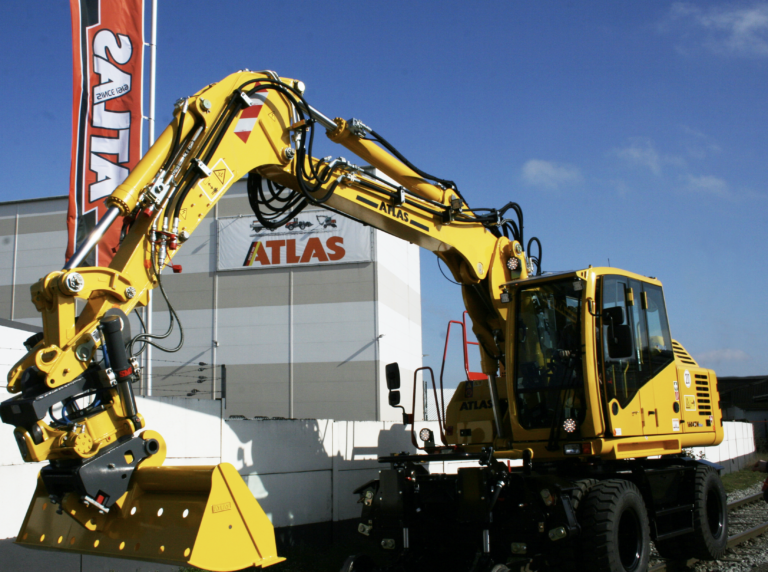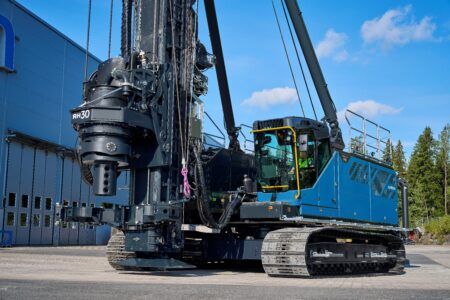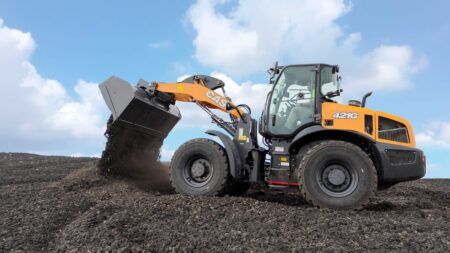The new 1604ZWblue rail-road excavator by German-based OEM Atlas offers a new rigid axle with automatic switchable axle locks (RADL), resulting in improved safety and enhanced flexibility to an exponential degree.
With such a feature the rear axle of the new excavator can be fully locked utilising an automatic differential lock system when in rail operation mode. This is new to the industry and is innovative, groundbreaking and exclusive to Atlas.
As is the norm, both axles are operated in all-wheel drive, the front axle as an oscillating steering axle, while the rear one functions as a rigid axle. When the rear axle is automatically locked by the switchable differential system, it is directly relieved of its load – which in turn means that the load distribution is balanced on both sides of the machine. This huge operational benefit is particularly evident when working on transverse tracks, because traction under load can be handled much more accurately and therefore with a much greater level of safety.
Matthias Dirscherl from the technical development team at the Atlas excavator plant in Ganderkesee, describes the new rigid axle with differential lock (RADL) as having, “considerably improved traction on both wet and dry rails”. A common problem with other manufacturers machines is that the wheels facing upwards on the slope spin when starting and accelerating on a raised rail, with the 1604ZWblue this problem no longer exists due to the automatically and by 100 % locked rigid axle. In addition, these new Atlas rail-road excavators can drive over larger track twists in friction drive operation without the excavator losing traction.
This is a reminder that the first rail-road excavator ever designed and placed on the rails over 50 years ago was also an Atlas machine, on the test tracks at the excavator factory in Ganderkesee. Jochen Weyhausen-Sauer (84), one of the two design engineers responsible for the project still remembers that moment in time in great detail. Jochen also remembers that the shape of the new model has similarities to “the old original”, “but technically nothing is the same now as it was then.





